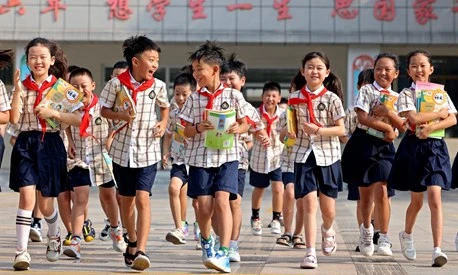





China Introduces Ambitious Education Plan Aimed at National Modernization
On Sunday, China unveiled a comprehensive education plan as part of its broader strategy to emerge as a global educational leader by 2035. The initiative, released by the Central Committee of the Communist Party of China (CPC) and the State Council, outlines a detailed approach to establish a strong education system that supports the nation’s development and revitalization.
The document focuses on developing a robust educational framework that aligns with socialism infused with Chinese characteristics. Major elements include ideological and political guidance, increased competitiveness in talent, advancements in science and technology, security for livelihoods, social unity, and global impact.
To reinforce China’s status as an educational powerhouse, the plan sets specific objectives. By 2027, the country aims to create a high-quality education framework that marks significant progress in nurturing independent talent while continuously producing exceptional and innovative individuals. By 2035, China envisions a fully realized educational system, characterized by top-notch basic education quality and accessibility, alongside a fully developed learning society and overall educational modernization.
This new plan is the first national action strategy aimed specifically at elevating China to an educational leadership role. It reflects a long-standing goal to improve the nation’s educational sector and support its modernization pursuits across various fields.
A significant element of the blueprint is the rapid development of higher education. The plan underscores the necessity of cultivating advanced research universities, encouraging prestigious international institutions to establish science and engineering courses in China, and advancing professional postgraduate programs. The country will also modify university disciplines to ensure alignment with technological progress and national priorities, focusing on emerging, interdisciplinary, and core fields essential for the country’s future.
The plan further advocates for the creation of an environment conducive to exploration and risk-taking, facilitating the development of highly skilled faculty members and distinguished scholars. In line with these objectives, the Ministry of Education announced that China will introduce 1,673 new undergraduate programs that match national priorities while discontinuing 1,670 programs that do not align with the nation’s changing needs.
Newly introduced fields of study will include intelligent maritime technologies and intelligent materials, aimed at supporting China’s strategic industries and high-tech sectors, especially in regions like the Guangdong-Hong Kong-Macao Greater Bay Area.
The blueprint also significantly highlights the importance of international collaboration. China intends to boost its capability to attract and educate global talent while expanding educational exchanges with other nations. The country will initiate 800 international summer school programs in the next three years and welcome 50,000 American and 10,000 French students for exchange programs in the forthcoming years.
China’s educational reforms also include bolstering academic and research partnerships with international institutions. The country plans to enhance its participation in global scientific projects, such as the Deep-time Digital Earth initiative and the Ocean Negative Carbon Emissions project. Additionally, China aims to engage actively in international education governance and support the establishment of global STEM (science, technology, engineering, and mathematics) educational institutions.
The educational strategy also encompasses measures to track changes in the demographics of school-age populations, encourage high-quality, equitable growth in compulsory education, and guarantee educational integration between urban and rural areas. Furthermore, the nation seeks to cultivate more skilled professionals and master craftsmen, improving vocational education and training to address the needs of modern industries.
This newly introduced educational strategy represents a pivotal advancement in China’s ongoing endeavor to develop an education system capable of backing its ambitious modernization objectives, both domestically and internationally. By 2035, China anticipates establishing a world-class educational system that promotes innovation, nurtures talent, and enhances the nation’s position on the global stage.
Welcome to the future of digital storytelling, where creativity meets innovation. We’re not just a magazine platform; we’re a team of passionate visionaries committed to transforming how stories are shared, celebrated, and experienced in the digital age. Join us as we inspire, inform, and redefine the world of digital magazines.
© Copyright 2025 | educationeureka | All Rights Reserved.